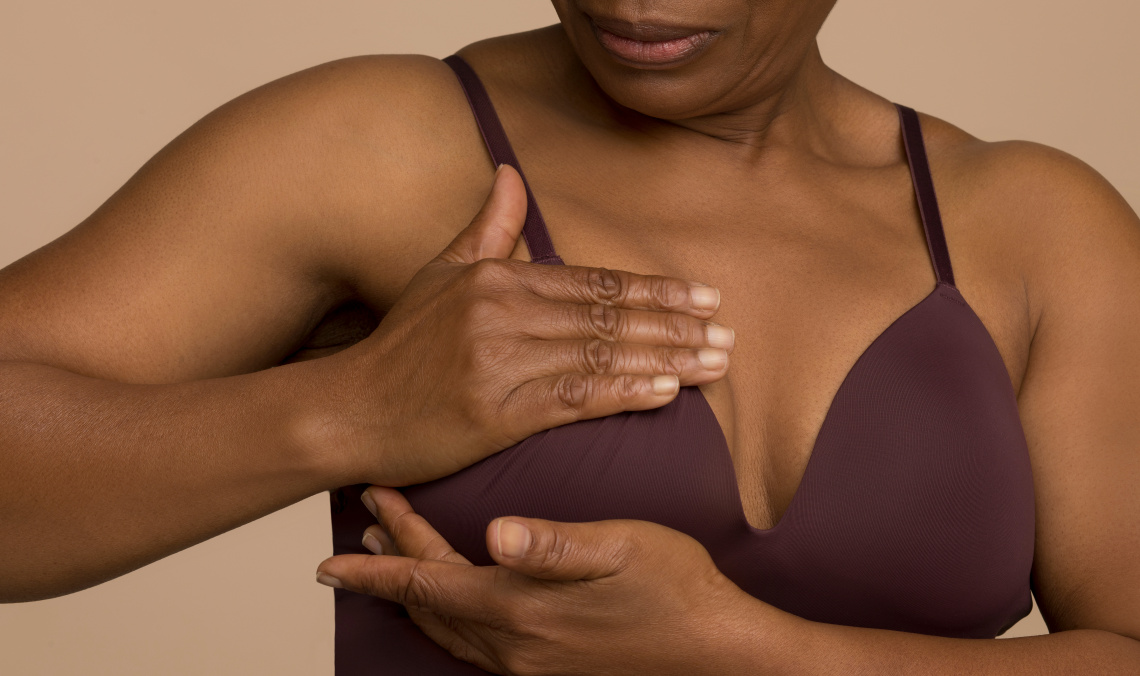Because Black women are more likely to develop aggressive breast cancer at a younger age, so many women might be disadvantaged by the recommendation to start mammograms at age 50.
Patricia Fox was only 26 when she discovered a lump on her left breast. ‘When I phoned my OBGYN, he told me I was a young Black woman and had dense breasts, and it was probably a cyst,’ she says. ‘They were ready to turn me away.’ Thankfully Fox persisted and asked her doctor to do a biopsy. The results came back positive for breast cancer – and an intensive chemotherapy treatment programme followed.
Patricia’s story is not unique. Black women are more likely to be diagnosed with breast cancer at a younger age, and on top of that, the cancers they do get tend to be more aggressive and harder to treat.
According to 2019 breast cancer statistics, those trends, along with other barriers to diagnosis and treatment, make Black women 40% more likely to die from breast cancer than white women. Some researchers say that if Black women had their first mammogram at age 40 (instead of age 50) – and had one every second year after that – breast cancer deaths could be reduced by 57%.
An article published in the Journal of Breast Imaging shows that breast cancer occurs at a younger age in Black women and is more likely to present as the more aggressive triple-negative (TN) and HER2-positive subtypes.
The term triple-negative breast cancer refers to the fact that the cancer cells don’t have oestrogen or progesterone receptors (ER or PR) and also don’t make any or too much of the protein called HER2. (In other words, the cells test "negative" on all 3 tests.) This type of cancer grows and spreads faster than other types of breast cancer, has limited treatment options, and has a worse outcome.
HER2-positive breast cancer tests positive for a protein called human epidermal growth factor receptor 2 (HER2). This protein promotes the growth of cancer cells. HER2-positive breast cancers also tend to be more aggressive than other types of breast cancer.
The paper also states African American women experience many barriers to screening. Major ones include the lack of contact with a primary health care provider, pain, embarrassment, low income, and a lack of health insurance. There is also the erroneous perception that Black women have a low risk of breast cancer.
‘If African American women’s lives are to be saved, these aggressive breast cancers must be diagnosed and treated early,’ says co-author of the paper Dr Murray Rebner, a radiologist who specialises in breast imaging.
Breast cancer diagnosed before age 50 represents 23% of all breast cancers in African American women and only 16% of all breast cancers in white women. White women were found to have a higher incidence of breast cancer over the age of 60.
The US Preventive Services Task Force, the American Academy of Family Practice, and the American College of Physicians all advise for initiating mammography screening at age 50, with the option to begin screening between the ages of 40 and 49 years based on individual risk factors and personal choice. But Dr Rebner says this recommendation might be inadvertently putting black women at a disadvantage given the higher incidence of aggressive cancer diagnosed at a young age in this group of women.
Dr Christina Chapman is an oncologist at the University of Michigan and lead author of the Journal of Breast Imaging article. ‘In addition to the higher death rate, Black women are likely to get cancer at younger ages, a more aggressive subtype, and not receive adequate treatment as often,’ she says. ‘When you consider all these factors, it means Black women might benefit from a different screening schedule compared to other populations.’








Comments